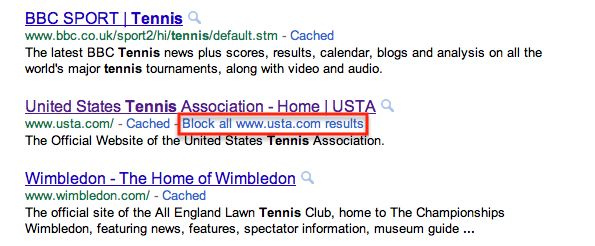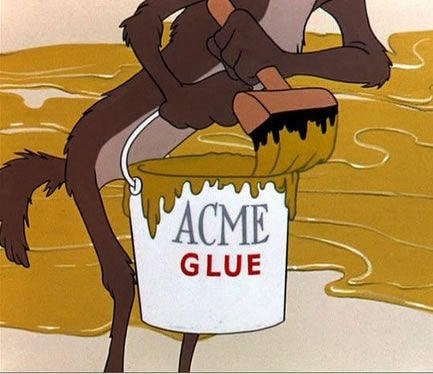
Dwell time is one of the most important, yet frequently misunderstood, site metrics. Many marketers put too much faith in Time on Page when evaluating traffic, but this metric is unreliable and can be misleading.
In today’s post, we’re going to look at what dwell time is, whether search engines use it as a ranking signal, and examine ways in which you can increase the average dwell time on your site.
What is Dwell Time?
Three years ago, Duane Forrester at Bing wrote a blog post about how to build quality content. It was in this blog post that the concept of dwell time was first introduced.
Simply put, dwell time is the actual length of time that a visitor spends on a page before returning to the SERPs. In theory, the longer the dwell time the better, as this indicates that the visitor has consumed most (if not all) of the content on a page before either returning to the SERPs or performing another action on the site.
Bounce Rate and Actual Bounce Rate
Before we go any further, it’s worth pointing out the differences between bounce rate and actual bounce rate, since dwell time is closely related to bounce rate.
Analytics platforms, including Google Analytics, need two clicks to accurately determine Time on Page – and entrance click and an exit click. However, without that all-important second click, even a session in which a visitor arrives at a page, stays for 25 minutes and then leaves will be considered a bounce, even though it clearly isn’t. This is the principle behind bounce rate and actual bounce rate.
Obviously, a visit with a duration of six seconds is an actual bounce. The visitor arrived, decided almost immediately that the page or content wasn’t what they were looking for, and bounced away. However, a visit during which the user arrives and spends almost half an hour reading an engaging piece of long-form content before leaving is not an actual bounce. This is why some pages that rank highly and have excellent content may seem to have high bounce rates. They don’t have high actual bounce rates, but high standard bounce rates.
This is why dwell time is a more reliable indicator of a page’s quality and relevance than bounce rate, which some marketers feel is too simplistic to be trustworthy. But what do the search engines do with dwell time?
🚙 Want to boost traffic to your site?
Download our free guide>> 25 Ways to Increase Traffic
Is Dwell Time a Ranking Signal?
The question of whether dwell time is used by the search engines as a ranking signal has been debated at length by SEOs for years. Although Google remains characteristically tight-lipped about any specific metric that features in its algorithms, the introduction (and subsequent removal) of a particular feature in Google suggests that dwell time is a ranking factor. That feature was the option to block all results from specified domains.
The general consensus is that Google determined whether or not to offer the option to block a domain from SERPs based on dwell time. Obviously the precise threshold remains a mystery to this day, but it stands to reason that a shorter dwell time would result in a visitor being presented with the block option, as this resulted in a considerably better user experience – Google’s ultimate goal (besides making boatloads of cash, of course).
Another indication that the bods at Google were paying attention to dwell time as a ranking signal was the “More by” feature in the SERPs.
This function was closely connected to authorship. Verified content creators publishing articles with long dwell times were apparently being rewarded in the SERPs with higher placements and the “More by” links beneath the primary search result. Although authorship remains an important social signal, both “More by” and domain blocking have been retired by Google – a real shame, given how useful these features were.
Regardless, let’s not forget Forrester’s assertions in his post that dwell time can be used to reliably infer the quality and relevance of a page’s content to the user. It’s not often we’re given such a clear indication that a search engine is indeed focusing on a particular metric to tweak its algorithm.
For now, the question of whether dwell time is a definitive ranking signal will remain unanswered – but personally, I suspect that it is.
How to Increase Dwell Time
So, now that we’ve established what dwell time is and why we should probably consider it to be a ranking signal, how do you increase dwell time on your site?
In all honesty, you should be doing at least three of these four things anyway, regardless of whether you’re trying to increase your dwell time or not. There is no magic bullet when it comes to increasing dwell time, but adopting these techniques might help your content become more “sticky.”
Produce Better Content
The first suggestion to help you increase dwell time is to produce better content. After all, nobody’s going to stick around to read your stuff if it’s crap, are they?
Whether you’re producing blog posts, infographics or videos, good content should be:
- Useful (actionable or educational)
- Entertaining (funny, unusual/offbeat, surprising)
- Accessible (skimmable, conversational, well-designed)
We’ve written plenty of great content about, well, content, so if you’re worried that your blog isn’t performing as well as it could be, check out some of our resources on creating killer content. The better your content, the more likely visitors are to stick around, thus increasing your dwell time.
Use Strong, Logical Internal Linking
Since dwell time is measured on the time between arriving at a page and returning to the SERPs, it makes sense to provide users with additional actions to take when they’ve finished reading your content, essentially preempting a possible second query or answering another question. This results in a better user experience for the visitor, which is why internal linking is so important.
Of course, internal linking is essential to maximizing SEO. Without a strong and logical internal linking strategy, your site may suffer in the rankings, as the search engines’ spiders may not be able to thoroughly index the entirety of your site.
Adopt Better Engagement Tactics
Just as internal links to other articles and pages can persuade your visitors to stay on your site for longer, so too can engagement techniques such as content recommendations.
By suggesting relevant articles to your readers, you’re providing them a strong incentive to remain on your site. This tactic can be highly effective when implemented correctly, and the more closely related the recommended articles are to the piece of content the reader is viewing, the more likely they are to remain on your site by clicking through. After all, if a visitor can learn more about another topic of interest to them without returning to the SERPs, why wouldn’t they?
Introduce a ‘Pageless’ Scrolling Design
Another technique you can use to increase dwell time is to introduce a “pageless” or scrolling design for your web pages.
Although infinitely scrolling pages can be great in terms of user experience, they can actually harm SEO if implemented poorly. This is because search engine crawlers are stupid and cannot always replicate user behavior, such as clicking or scrolling. Dumb robots.
Fortunately, there’s a handy solution that doesn’t involve a great deal of work. To help search engine crawlers thoroughly index the content of a scrolling page, the page has to be broken up into paginated sections. Each section has a similar <title> tag, with rel=”next” and rel=”prev” values declared in the <head> tag.
To read more about how to paginate an infinitely scrolling page, check out Google’s official blog post on the topic.
Stick Around, Why Don’t You?
Whether dwell time is a ranking signal or not, increasing the amount of time visitors spend on your site and reducing your bounce rate can only be a good thing. By implementing the features listed above, you can make your pages stickier, provide a more engaging experience for your visitors, and potentially increase conversions. Oh, and if Forrester is right, you might just rank more highly as well.













